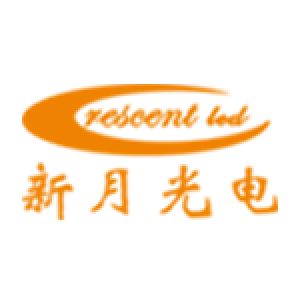Difference Between SMD LED and COB LED PackagePosted by crescentled on January 21st, 2019 The Definition of COB COB is the abbreviation of chip on board, which means chip on board packaging, a bare chip mounting technology. The semiconductor chip is placed on the printed circuit board, and the electrical connection between the chip and the substrate is realized by the method of lead wire seaming and covered with resin to ensure its reliability. The first step is to cover the placement point of silicon wafer with a thermally conductive epoxy resin (usually an epoxy resin doped with silver particles) on the surface of the substrate, and then place the silicon wafer directly on the placement point, heating the silicon wafer until it is firmly fixed on the substrate. The second step is to establish an electrical connection directly between the silicon wafer and the substrate by wire bonding.
The Definition of SMD SMD is the abbreviation for Surface Mounted Devices, which is one of the components using surface mount technology. In the initial stages of electronic circuit board production, via assembly was done entirely by hand. After the first automated machines were introduced, they could place some simple lead components, but complex components still required manual placement for wave soldering. Surface mounted components were introduced about twenty years ago and have started a new era. From passive components to active components and integrated circuits, they have finally become SMD and can be assembled by pick and place equipment. For a long time, it was a common thought that all the lead components could eventually be packaged in SMD LED. In terms of the production process, COB LED packaging is basically the same with the traditional SMD production process, which has a systematic thermal resistance process of chip-solid glue-solder joint-solder paste-copper foil-insulation layer-aluminium. The systematic thermal resistance of the COB packaging is: chip-solid glue-aluminium. The labour and manufacturing costs of conventional SMD packaging account for about 15% of the cost of materials, while COB packaging only account for about 10%. The efficiency of COB LED package is much higher than SMD products, using COB packaging can save 5% of the labour and manufacturing costs. The systematic thermal resistance of COB LED packaging is much lower than that of traditional SMD packaging, which greatly improves the useful life of LED. Through the method of patching, traditional SMD LED package puts multiple discrete devices on the PCB to form the light source for LED application, which suffers from the problems of pin light, glare, and ghosting. The COB packaging, as integrated package, is a surface light source that has advantage of having a large and adjustable viewing angle, reducing the loss of light refraction. Compared with traditional SMD LED packaging, COB LED packaging has much more advantages. With the continuous advancement of LED lighting technology, COB technology has received more and more attention. Because COB light source has the features of low thermal resistance, high luminous flux density, less glare and uniform luminance, it is now widely applied in indoor and outdoor lighting, such as downlights, bulbs, fluorescent tubes, street lamps, and mining lamps. Like it? Share it!More by this author |


